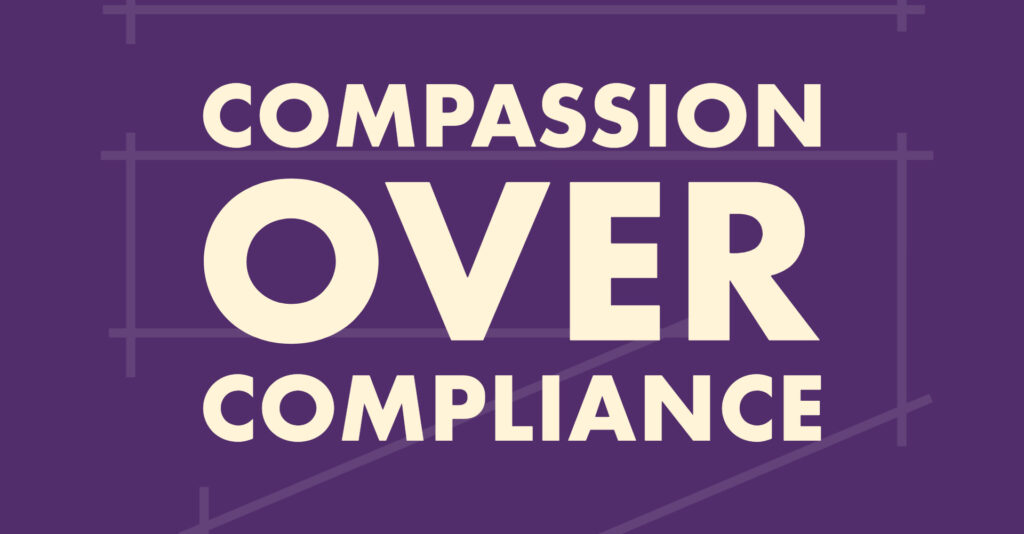When it comes to accessibility, compliance with regulations like the Americans with Disabilities Act (ADA) is often seen as the primary goal. However, true inclusivity goes beyond simply meeting legal requirements. It’s about creating spaces, services, and experiences that genuinely welcome everyone—and in doing so, fostering meaningful connections with diverse communities.
At Equal Accessibility®, we’ve seen firsthand how businesses that prioritize inclusivity beyond compliance build stronger relationships with their customers, communities, and employees. This commitment to inclusivity also fosters a culture of innovation and empathy across the organization. Here, we explore why this approach matters and how it can transform your organization.
The Limitations of Compliance
Compliance is essential—it establishes a baseline for accessibility and ensures businesses meet legal standards. Yet, relying solely on compliance can result in environments that meet technical requirements but fail to address the real needs of individuals with disabilities. For example:
- Rigid Designs: Facilities designed solely for compliance may lack the flexibility to accommodate diverse needs.
- Minimal Engagement: Compliance often focuses on structural changes, neglecting the human element of accessibility.
- Missed Opportunities: Businesses that view accessibility as a checkbox miss out on the chance to innovate and connect with a broader audience.
Moving Toward True Inclusivity
Inclusivity begins where compliance ends. It’s about understanding the unique experiences of individuals with disabilities and designing spaces that not only meet but exceed their expectations. Here are some key principles for achieving inclusivity:
- Listen and Learn: Engage directly with people with disabilities to understand their challenges and preferences. Their insights are invaluable.
- Adopt Universal Design: Create environments that work for everyone, regardless of ability, by focusing on flexibility and ease of use.
- Invest in Training: Equip your team with the knowledge and empathy to provide exceptional service to individuals with disabilities.
- Prioritize the Experience: Consider how customers interact with your business, from the moment they arrive to the time they leave. Accessibility should enhance the entire experience.
- Hire Employees and Collaborate: Seek opportunities to hire employees and partner with individuals with disabilities to bring diverse perspectives and experiences to your business.
- Hire Equal Accessibility® for Evaluations: Partner with Equal Accessibility® to conduct comprehensive inclusivity assessments that go beyond compliance and deliver actionable insights.
The Benefits of Going Beyond Compliance
Businesses that embrace inclusivity as a core value reap numerous rewards:
- Enhanced Customer Loyalty: Customers with disabilities and their families are more likely to support businesses that demonstrate genuine care and understanding.
- Positive Brand Reputation: Inclusivity signals that your business values diversity, making it more appealing to a wide range of customers.
- Increased Employee Satisfaction: Inclusive workplaces empower employees, fostering a culture of respect and belonging.
- Innovation and Creativity: Designing for inclusivity often leads to solutions that benefit everyone, driving innovation and improving overall user experiences.
Real-Life Success Stories
We’ve worked with businesses across industries to help them move beyond compliance and embrace true inclusivity. One example is our collaboration with a manufacturing company that sought to make its facilities more welcoming for employees with disabilities. By implementing universal design principles, enhancing pathways for wheelchair access, and prioritizing employee input, the company transformed its workspace into a model of inclusivity. The result? Increased productivity, happier employees, improved employee retention, and recognition as an industry leader in accessibility.
The success of this initiative extended beyond the workplace. Customers visiting the facility also noticed the inclusive design changes, sharing positive feedback about how welcoming and thoughtful the environment felt. This reinforced the company’s reputation as a leader in accessibility and strengthened their relationships with the communities they serve.
Building Genuine Connections
Inclusivity is not just about physical spaces—it’s about building relationships. When businesses prioritize accessibility and inclusivity, they show their customers and employees that they are valued, seen, and understood. These efforts go a long way in creating trust and loyalty.
At Equal Accessibility®, we help businesses go beyond compliance to create meaningful change. If you’re ready to transform your organization into a model of inclusivity, contact us today. Together, we can create spaces that inspire genuine connections and make everyone feel welcome.


